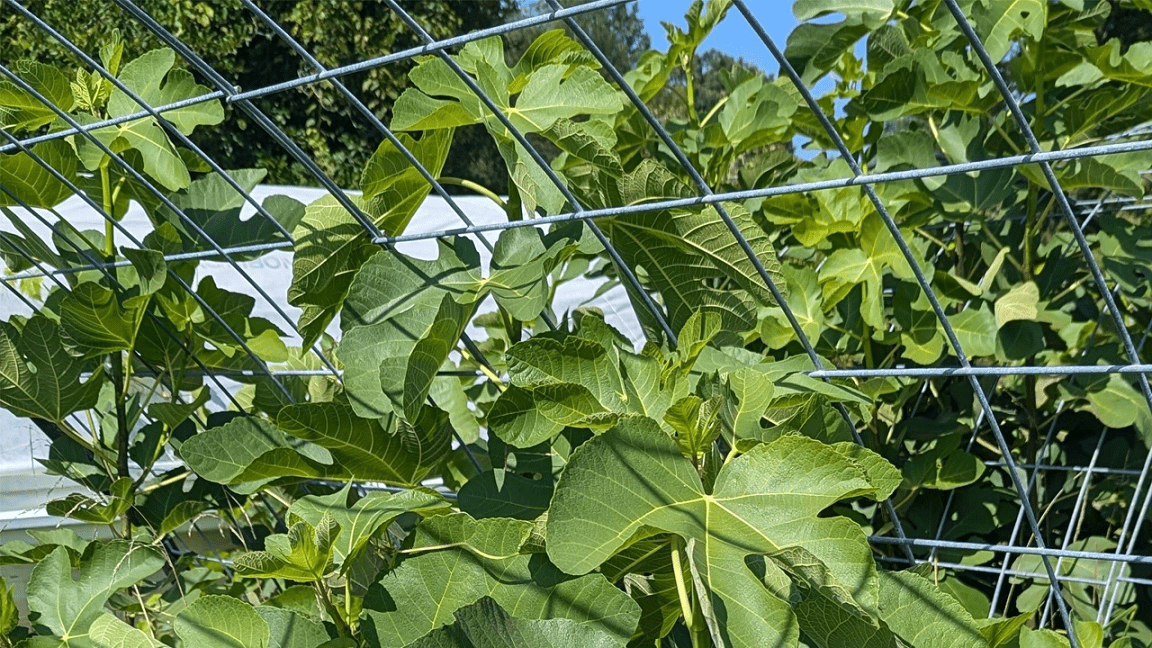The fig tree (Ficus carica) has been cultivated since ancient times. Though native to the Mediterranean, it is now grown around the world. Figs can be found in many different dishes and cuisines. If you’re interested in growing your own figs, here’s what you’ll need to know:
Fig trees prefer dry and sunny locations. Plant in a well-drained soil. It is sub-tropical, but can be grown as a patio plant. In cold climates (USDA zones 5 or lower), take the plant indoors to over winter. If left unprotected in cold regions, the branches will die down to the ground. The roots, however, are winter hardy, and in late spring will push up new branches. The advantage of maintaining live branches to overwinter is that in spring, many varieties will reward you with an early crop of figs called a breba crop. The breba crop forms on older wood, formed the previous growing season. The new growth will bear figs, but these will be later in the growing season, into September and October, and some late bearing varieties may not fully ripen.
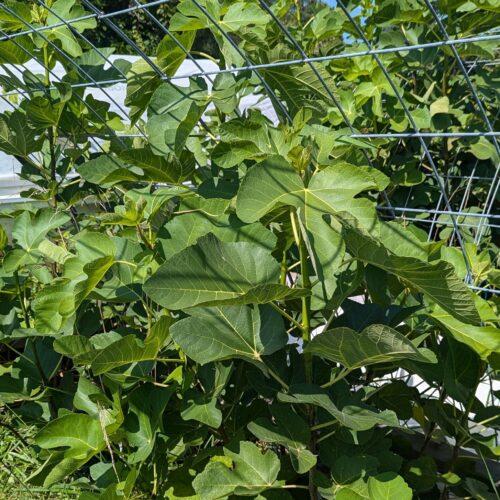
Fig Varieties to Grow
There are many fig varieties from which to choose, depending on which characteristics you want to emphasize. Some notable traits include greater winter hardiness, early ripening, resistance to splitting, a berry-like flavor, or being prolific fruit bearers.
The Hardy Fig Trees
Chicago Hardy is considered one of the hardiest figs, cold hardy to USDA zone 6. The medium-sized fruit has light brown to deep purple skin with sweet, pink flesh, with berry notes and jammy texture. It ripens in late summer and early fall. It will grow 10 to 15 ft. tall and 9 to 12 ft. wide. Similar varieties are Bensonhurst Purple, Azores Dark, and Sicilian Dark. Little Ruby is a seedling of Chicago Hardy that is an early bearer and reliable in humid climates, along the mid-Atlantic region.
Early Ripening Varieties
Campaniere, Little Ruby, Verdolino, Smith, Texas BA-1 are early ripening varieties.
Berry Nice Fig Varieties
There are numerous varieties that have berry-like notes. Black Celeste has a complex berry flavor, as does Corio Provence, Smith, Texas BA-1, and Verdino del Nord. Nerucciolo d’Elba has notes of blueberry, and The One and Vagabond have notes of grape. White Adriatic has notes of raspberry and strawberry. Hative d’Argenteuil has cherry-like notes.
Other Notable Figs
Marseillaise, similar to Verdino del Nord, has notes reminiscent of brown sugar! Pernette Noir has figgy notes and a jammy texture.
A Note on Toxicity
The milky sap of figs contains furanocoumarins, which can cause a dermatitis when the affected area is exposed to sun (phytophotodermatitis). When handling figs or pruning them, it is a good idea to wear gloves and long-sleeved shirts to avoid skin exposure to the sap.
Cultivating Fig Trees
As noted above, there are quite a few varieties from which to choose (and this list is far from exhaustive)! For more on varieties, consult this page. In places with hardy winters, figs are grown as trees, but they can also be grown as multi-stemmed woody shrubs. There are advantages to each form. Trees store greater amounts of carbohydrates that result in greater productivity, but may be harder to cultivate due to their size. It is easier to harvest fruit from shrubs and to protect them from winter cold, but they require constant pruning.
As with any shrub, you want to maintain an open center, eliminate crossing branches and suppressed branching. Maintain healthy, robust stems for best fruit production. Pruning ought to be done throughout the growing season. Once structure has been established, remove lower leaves that begin to yellow, as these are less productive. Maintaining an open center allows for increased air circulation and light infiltration. I wrote more about tree pruning in a previous post.
Propagating Fig Trees from Cuttings
Select cuttings that are at least pencil thick. Make cuttings that retain 3 to 4 buds. Remove leaves, if still attached and remove the bark at the base of the cutting on one side using a carpenter’s knife. Dip the cutting in rooting hormone, and stick in a moist medium made of peat and sand or perlite. I like a mix of two-thirds moistened peat and one-third perlite. Wrap the upper (apical) bud in parafilm to prevent it from drying. Stick the cutting in the rooting mix burying one to two buds. The media ought to be moist, but not sodden. I use a 4” pot and once stuck, place into a 1-gallon plastic bag to preserve moisture. Store over winter in the cellar, keeping it cool, but frost free. In spring, the rooted cuttings ought to sprout and grow through the parafilm. I have found this method to be very successful in propagating fig cuttings. Once rooted, plant out or pot up into larger containers to grow out your fig trees!
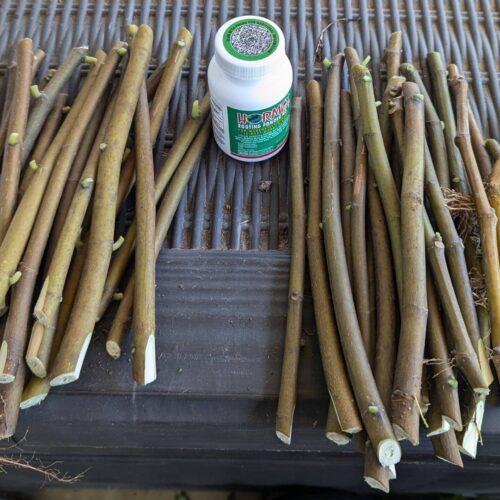
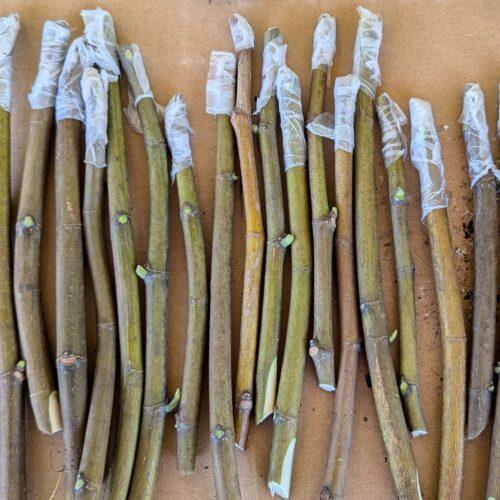
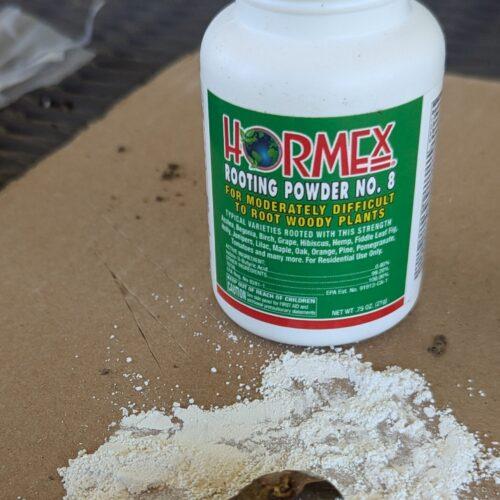
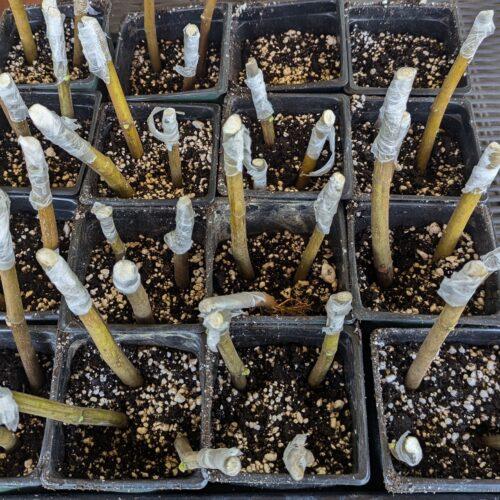
Overwintering Your Fig Trees
In marginal climates (USDA zones 5 or less), it is best to grow your fig trees in pots. In autumn, before winter lows, bring the plants indoors. You can stow them in a cellar or put them in a well-lighted window. In USDA zones 6 or 7, you may opt to grow your figs in a low tunnel to provide winter protection or elect to wrap your fig tree. Wrap your fig tree after a hard frost, when all the leaves have fallen. Mulch the base of the tree with 6 to 12” dry straw or leaf mold. Tie the branches together using twine or rope. Cover the branches with a breathable material such as burlap or row cover. Avoid plastic that can lead to the development of mold. Create a frame around the tree using chicken wire, and fill with mulch. Cover with a tarp, and place a bucket over the top of the tree to shed water. Unwrap your tree in spring, when the weather warms. Note however, that the buds and new growth are sensitive to spring frosts, a freeze of 25-27 F will kill the new growth.
I hope this blog encourages you to plant your own fig trees and enjoy this beloved fruit!
~ Signing off for now, Joe

